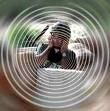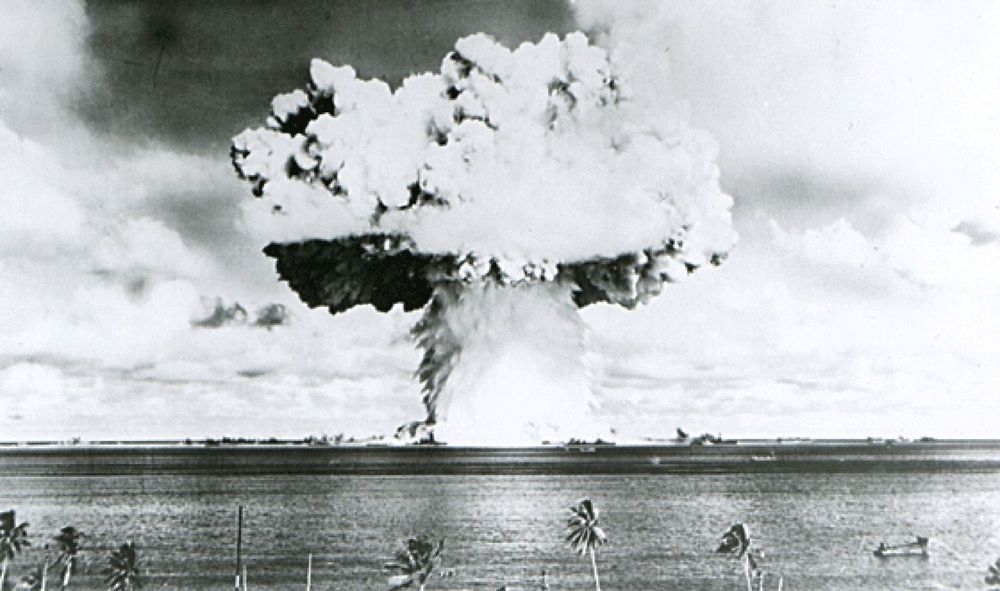Spain death toll passes 10,000; Catalonia asks Spanish army for help; Thailand imposes national curfew.
Category: military
2007…
Imagine a weapon that creates sound that only you can hear. Science fiction? No, this is one area that has a very solid basis in reality. The Air Force has experimented with microwaves that create sounds in people’s head (which they’ve called a possible psychological warfare tool), and American Technologies can “beam” sounds to specific targets with their patented HyperSound (and yes, I’ve heard/seen them demonstrate the speakers, and they are shockingly effective).
 Now the Defense Advanced Research Projects Agency is jumping on the bandwagon with their new “Sonic Projector” program:
Now the Defense Advanced Research Projects Agency is jumping on the bandwagon with their new “Sonic Projector” program:
The goal of the Sonic Projector program is to provide Special Forces with a method of surreptitious audio communication at distances over 1 km. Sonic Projector technology is based on the non-linear interaction of sound in air translating an ultrasonic signal into audible sound. The Sonic Projector will be designed to be a man-deployable system, using high power acoustic transducer technology and signal processing algorithms which result in no, or unintelligible, sound everywhere but at the intended target. The Sonic Projector system could be used to conceal communications for special operations forces and hostage rescue missions, and to disrupt enemy activities.
“Our hypersonic testbeds will serve as a catalyst in sparking a renaissance in hypersonic technologies for our government, the commercial sector, and academia,” said W. Jean Floyd, Stratolaunch’s chief executive, in a statement.
This is an interesting, if not wholly unexpected, turn for Stratolaunch. During the last decade, the aerospace community has often collectively scratched its head, wondering how such a large aircraft could be cost-competitive in the hotly contested market to launch small- and medium-sized satellites. And without a dedicated rocket in existence, the company seemed little more than a vanity project for the wealthy Allen. If Stratolaunch served any purpose, the speculation went, it must be to meet some unspecified military need.
There can be no question that the military is interested in hypersonic technology. China, Russia, and the United States are all racing to develop hypersonic missiles, as well as new countermeasure technology as high-speed missiles threaten to penetrate most existing defenses. A Rand Corporation report from 2017 provides more basic information, suggesting, “There is probably less than a decade available to substantially hinder the potential proliferation of hypersonic missiles and associated technologies.”
With over 17,300 cases and 1,135 deaths to date, Iran has been one of the countries hit hardest by COVID-19, with the virus affecting not only the population at large, but a big portion of the political elite as well. Last week, Supreme Leader Ali Khamenei said there was evidence that the pandemic may have been a “biological attack.”
A group of 101 Iranian doctors has penned a letter addressed to the leaders of Afghanistan, Georgia, Iraq, Kazakhstan, Kyrgyzstan, and Pakistan to take ‘immediate action’ to destroy “all of the US biological laboratories” in their countries amid fears that the coronavirus pandemic may have been spread deliberately as a form of biological warfare, Press TV has reported, citing the letter.
O„.o carbon nanotube suit.
Researchers announce new military funding in search for body armor skin that could be 300 percent stronger than anything we’ve seen before.
In Christopher Nolan’s Batman Begins, there’s a scene where inventor Lucius Fox, played by Morgan Freeman, explains that Wayne Enterprises has created a prototype body armor for the U.S. infantry that’s as light as Kevlar but bullet- and knife-proof. Bruce Wayne asks why it never went into production. “The bean counters figured a soldier’s life wasn’t worth the 300 grand,” Fox replies.
In real life, and with Defense Department money, researchers from Florida Atlantic University, or FAU, are using advanced polymers and carbon nanotubes to engineer a new type of body fabric that could prove 300 percent as strong as today’s state of the art, but just as light.
Getting far better at predicting what research will produce may be the only way to save the world.
It is vital that would-be bombmakers be disabused of any notion that they could evade tough international sanctions. We need a country-neutral, reasonably predictable, more-or-less automatic sanction regime that puts all countries on notice, even friends of the powerful.
By Victor Gilinsky Henry Sokolski
Just as we’ve had to discard business-as-usual thinking to deal with the current worldwide health emergency; it’s time to get serious about the spread of nuclear weapons. It doesn’t have the immediacy of the coronavirus, but it will last a lot longer and is no less threatening. In particular, we need to fortify the Nuclear Nonproliferation Treaty (NPT), which is fifty years old this year and badly needs fixing. The April 2020 Review Conference will likely be postponed, which provides time to develop something more than the usual charade of incremental proposals that nibble at the problem.
Researchers have used artificial intelligence to detect Vietnam War-era bomb craters in Cambodia from satellite images—with the hope that it can help find unexploded bombs.
The new method increased true bomb crater detection by more than 160 percent over standard methods.
The model, combined with declassified U.S. military records, suggests that 44 to 50 percent of the bombs in the area studied may remain unexploded.
If the U.S. is going to do more work in cold weather climates to deter malign activity from Russia and China, one Air Force general says it will need more equipment to operate full-time in the South Pole.
Pacific Air Forces commander Gen. Charles Q. Brown said Tuesday he’d like to see a boost in “some of the capability we have, but don’t have a lot of.”
“Icebreakers, for example. LC-130s? There’s not a lot of those,” Brown said during a speech at the Mitchell Institute for Aerospace Studies in Arlington, Virginia.
The US’ Northern Command has sent teams of essential staff deep underground to wait out the Covid-19 pandemic. On the surface, more than a million grunts won’t be quite as cocooned.
Air Force General Terrence O’Shaughnessy heads up the US’ Northern Command, as well as the North American Aerospace Defense Command – a joint US/Canadian operation that monitors the skies over North America for missile and airborne threats. Earlier this week, O’Shaughnessy told reporters via Facebook that some of his watch teams would be moved from their usual command center at Peterson Air Force Base in Colorado to a number of hardened underground bunkers.
One of these facilities is the Cheyenne Mountain bunker complex, a warren of tunnels buried under 2,000 feet (610m) of granite, and sealed behind blast doors designed to withstand a 30 megaton nuclear explosion.










